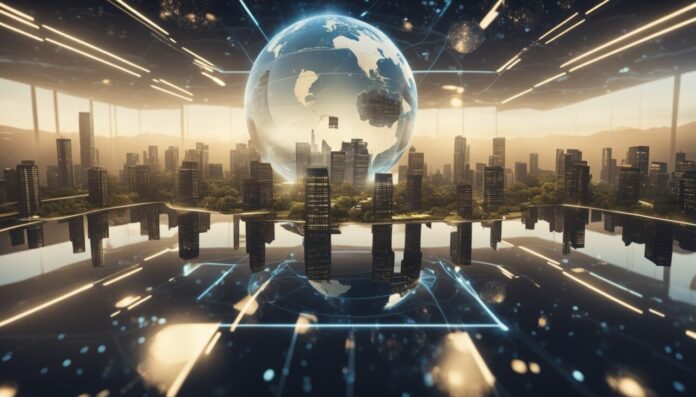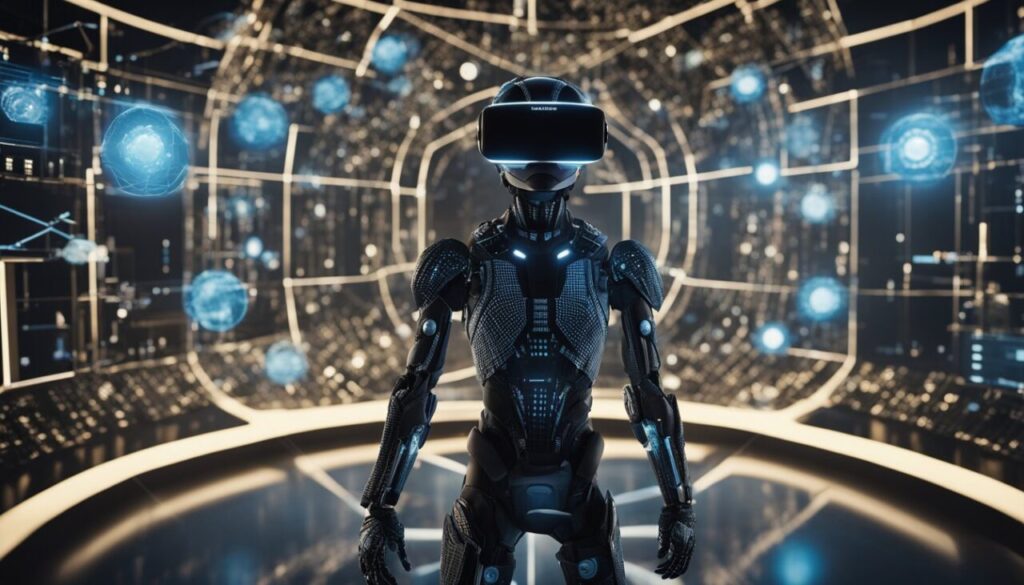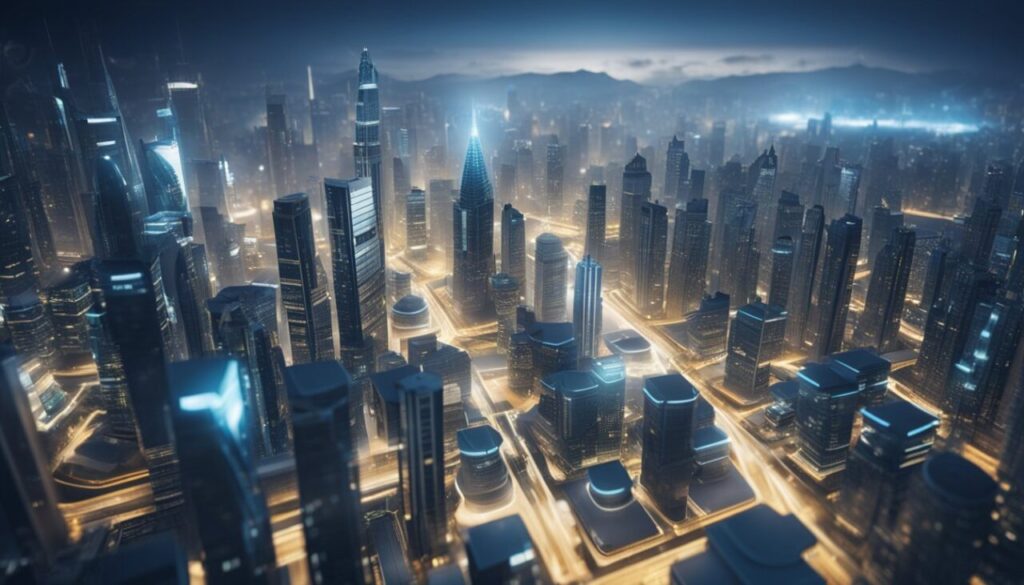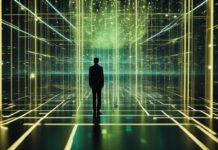
Ancestor simulations are a topic of highest interest in the fields of philosophy, computer science, and science fiction. Especially in the last 10-20 years.
The concept of ancestor simulations is based on the idea that we might be living in a simulation created by a more advanced civilization.
The simulation would be so advanced that it would be indistinguishable from reality, and the people living inside it would have no idea that they were in a simulation.
The idea of ancestor simulations was first proposed by Nick Bostrom, a philosopher at Oxford University, in 2003. Bostrom argued that if it is possible for a civilization to create a simulation of their ancestors, then it is likely that they would do so.
He also argued that if we are living in a simulation, then we are most likely living in an ancestor simulation created by a more advanced civilization.
Related:
Concept of Ancestor Simulations
The idea of ancestor simulations has gained popularity in recent years, particularly in the fields of philosophy and science fiction. It has been the subject of numerous debates and discussions, with many experts weighing in on the likelihood of its existence. While there is no concrete evidence to support the theory, it remains one of the most intriguing concepts out there. Especially in philosophy.
Philosophical Foundations
Simulation theory also has its roots in the work of philosopher René Descartes, who famously stated, “I think, therefore I am.” This statement suggests that our existence is based on our ability to think, rather than our physical bodies.
Simulation theory takes this idea a step further, suggesting that our entire reality is based on the computations of a more advanced civilization.
Although Descartes did not explicitly put forth the idea of living within a simulation, his philosophical standpoint implies the possibility of constraints on our perception and comprehension of reality.
He argued that our senses are susceptible to deception, raising doubts about the reliability of our perceptions of the external world.
And, while the philosophy of ancestral simulations is clear, the technological requirements for implementing such a simulation are not well-defined.
So, let’s see potential technological requirements.
Computational Power Needed for Simulation

Ancestor simulations require an immense amount of computational power. According to Nick Bostrom, to simulate one human brain, a computer would need to perform 10^16 operations per second for 100 years. This number is based on based the number of synapses in the brain and their firing frequency.
In other words that would mean that simulating an entire civilization would require an unimaginable amount of computational power.
To provide context here, let’s categorize the three most important things:
- Quantum Level Simulation: Simulating particles at the quantum level would require an enormous amount of computational power due to the inherent complexity and uncertainty associated with quantum mechanics.
- Physical Reality Simulation: Simulating the macroscopic world, including all the interactions of matter and energy, would require even more computational resources. This would include simulating the behavior of gases, liquids, solids, electromagnetic interactions, etc…
- Consciousness Simulation: If the simulation theory suggests that individual consciousness is part of the simulation, then simulating the human brain (or any conscious entity) would be an incredibly demanding task. This would involve simulating the functioning of billions of neurons and their complex interactions.
The computational power needed for such a simulation is currently beyond our technological capabilities.
It would require a level of computing power that surpasses anything we can conceive of today, possibly even more than the total computational capacity of the entire observable universe.
While current technology is not yet advanced enough to simulate an entire civilization, advancements in quantum computing and virtual reality may make it more feasible in the future.
And, as mentioned, if a previous civilization has already advanced to these levels of technology, there is a good possibility that we’re already in a simulation, but we don’t know it yet.
However, one must ask the question: is there a way to prove the simulation?
That’s where so-called simulation probes come into the equation.
Simulation Probes

Simulation probes are experimental attempts to test whether or not we are living in a simulated reality. If we are living in a simulation, then the creators of the simulation may have left “breadcrumbs” or clues that we can find to prove that we are in a simulation. Simulation probes can be thought of as a way to “hack” the simulation and find out if it is real or not.
There are several types of simulation probes that have been proposed, including:
- The Glitch Probe: This probe looks for glitches in the simulation. If we can find a glitch, then it may be evidence that we are living in a simulation. For example, if someone were to walk through a wall, that would be a glitch in the simulation.
- The Speed-of-Light Probe: This probe looks for limitations in the speed of light. In a simulation, the speed of light may be limited due to computational constraints. If we can find evidence that the speed of light is limited on purpose, then it may be evidence that we are living in a simulation.
- The Simulation Shutdown Probe: This probe looks for evidence that the simulation has been shut down. If we can find evidence that the simulation has been shut down, then it may be evidence that we are living in a simulation.
It is important to note that simulation probes are still purely theoretical and have not been tested.
It is also important to consider the potential dangers of simulation probes.
If we are living in a simulation, then the creators of the simulation may not want us to know that we are in a simulation. If we start looking for evidence of a simulation, then we may inadvertently cause the simulation to shut down or cause harm to ourselves.
As Preston Greene concluded in his paper: “We should not conduct simulation investigations because of the risk that we might be terminated if our world is a simulation designed to research various counterfactuals about the world of the simulators.”
That conclusion leads us to another important question which is:
Where Could be the Physical Location of the Simulation?

The idea of ancestor simulations raises the question of where such simulations could be physically located. According to Nick Bostrom, who first proposed the idea of ancestor simulations, the physical location of such simulations could be anywhere, including in a computer located in a distant galaxy or in a universe completely separate from our own.
One possibility is that the simulation is being run on a computer that is much more advanced than any currently in existence. Such a computer might be capable of simulating an entire universe, including all of the people and objects within it, with incredible accuracy.
Another possibility is that the simulation is being run on a computer that is not located in our universe at all. Instead, it could be located in a completely separate universe or even in a different dimension. This would allow the simulator to create a simulated universe that is completely separate from our own, with its own physical laws and properties.
It is also possible that the simulation is being run on a computer that is located within our own universe, but is hidden from us in some way.
For example, it might be located in a parallel universe that is not accessible to us, or it might be located in a black hole or other inaccessible region of space.
Overall, the physical location of ancestor simulations is still a matter of speculation and debate.
While it is clear that such simulations would require incredibly advanced technology, the exact nature of that technology and its physical location remain completely unknown.
And so, this question leads us to another important question and that is:
“Why would advanced civilization even create the simulation in the first place?”
Let’s explore several scenarios.
Why Would Posthuman Advanced Civilization Create a Simulation?

There are many potential reasons why would advanced civilizations create a simulation:
- Entertainment or Exploration: A posthuman civilization might create simulations for entertainment or exploration purposes. Just as we create virtual worlds in video games, a highly advanced civilization might use simulations to experience different scenarios or realities for amusement or curiosity.
- Research and Understanding: Simulations could serve as a tool for advanced civilizations to better understand their own history, evolution, or the fundamental principles of their universe. Running simulations with different parameters could provide insights into the development of life, intelligence, and complex systems.
- Historical Preservation: Simulations could be a means of preserving the history and culture of the civilization. By creating virtual environments that mimic their past, the civilization could ensure the continuity of knowledge and experiences.
- Ethical Testing: A posthuman civilization might use simulations to explore ethical questions and dilemmas. This could involve creating scenarios to test the ethical behavior of simulated entities or to examine the consequences of different moral choices.
- Simulation as a Substrate for Consciousness: If consciousness can exist within simulations, a posthuman civilization might create virtual environments to house digital or simulated beings with their own subjective experiences.
- Survival Strategy: Simulations could serve as a form of backup or survival strategy for a civilization facing existential threats. By creating simulated environments, they may increase the likelihood of preserving their knowledge and existence even if their physical civilization faces destruction.
- Testing Societal or Technological Changes: Simulations could serve as testing grounds for proposed societal or technological changes. By modeling different scenarios, a civilization could assess the potential outcomes and consequences of implementing certain policies, technologies, or cultural shifts.
- Escape or Exploration of Existential Questions: A posthuman civilization might use simulations as a way to explore existential questions about the nature of reality, consciousness, or the purpose of existence. Simulations could be a means of escapism or a tool for philosophical contemplation.
- Time Capsules for Future Discoverers: Simulations could be designed as time capsules, intended for discovery by future civilizations or entities. These simulations could contain information about the creators, their history, and the knowledge they deem important for the understanding of their existence.
Okay, so for now we’ve explored potential computational power, physical location, and reasons for creating ancestral simulation.
Now let’s conclude with frequently asked questions with regards to ancestor simulations.
Frequently Asked Questions

What are the core principles of Nick Bostrom’s simulation theory?
Nick Bostrom’s simulation theory proposes that it is possible for a technologically advanced civilization to create a computer simulation of a reality that is indistinguishable from the base reality. According to Bostrom, there are three possibilities for the future of humanity: either we will go extinct before we reach a post-human stage, or we will not be interested in running ancestor simulations, or we are almost certainly living in a simulation.
How might living in a simulation alter our understanding of reality?
Living in a simulation would fundamentally alter our understanding of reality. If we are living in a simulation, then the laws of physics, the nature of time, and the existence of consciousness might all be different from what we currently believe. Our sense of self, identity, and free will could all be called into question.
What is the probability that we’re living in a simulation?
The probability that we are living in a simulation is difficult to calculate. Bostrom argues that if it is possible to create a simulation that is indistinguishable from reality, then it is likely that we are living in a simulation. However, this argument assumes that civilizations will eventually reach a post-human stage and be interested in running ancestor simulations.
What are the main arguments for the possibility that we are living in an ancestor simulation?
The main argument for the possibility that we are living in an ancestor simulation is that if it is possible to create a simulation that is indistinguishable from reality, then it is likely that we are living in a simulation. Another argument is that the universe appears to be governed by mathematical laws, which could be evidence that it is a simulation. Additionally, some scientists have suggested that the universe appears to be pixelated, which could be evidence of a simulated reality.
Can we scientifically test if our universe is a simulated reality?
It is currently impossible to scientifically test if our universe is a simulated reality. However, some scientists have proposed experiments that could potentially detect if we are living in a simulation. For example, if the universe is a simulation, then there might be a limit to the resolution of the simulation, which could be detected through the behavior of cosmic rays.
What implications does simulation theory have for the concept of free will?
Simulation theory could potentially call into question the concept of free will. If we are living in a simulation, then our actions might be predetermined by the rules of the simulation. Additionally, if the creators of the simulation are controlling the actions of the simulated beings, then the concept of free will might not apply.
In the context of simulation theory, what could potentially exist beyond our perceived reality?
In the context of simulation theory, it is possible that there could be a higher reality beyond our perceived reality. If our reality is a simulation, then it is likely that the creators of the simulation exist in a higher reality. Additionally, if it is possible to create a simulation that is indistinguishable from reality, then it is possible that our reality is itself a simulation within a simulation.
Note: if you enjoyed this article you might like:




















